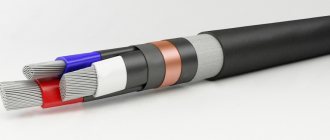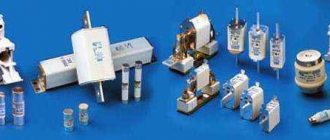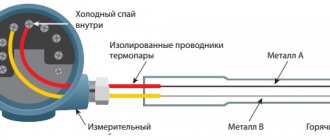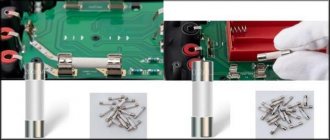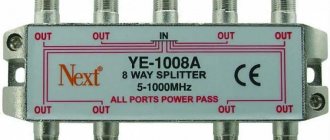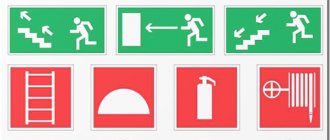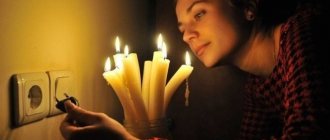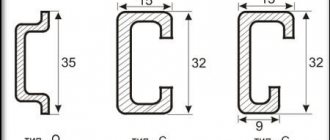Fire truck sirens are not uncommon in big cities. This suggests that the statistics about a large number of fires are reality. Not only shopping and entertainment centers are burning, apartments and houses, offices and factories are burning. And a common reason is people’s negligence. Someone didn’t put out an abandoned cigarette, someone didn’t check the quality of the electrical wiring in time, someone forgot the kettle on the stove, the list is endless. Preventing fire is the main task assigned to fire safety services. And today it can be solved simply - a fire alarm.
Peculiarities
All types of fire alarm detectors are technical means of fire protection that transmit notification of a fire to a receiving and control device. They are designed in the format of white round boxes mounted on the ceiling and equipped with several sensors. Detectors are mounted on objects and are used taking into account the environment. Modern devices are installed in apartments, houses, public areas, enterprises, and office buildings.
The fire protection system notifies the fire service in a timely manner even about small fires. If you connect an alarm system in addition to the fire extinguishing system, then the fire is extinguished within a few seconds immediately after detection.
Fire detectors have a very specific device to perform several functions:
- Detecting the source of fire during initial manifestations and activating a sound alert. Instant detection is ensured by the ability of sensors to detect changes in temperature, changes in the density of the environment, open fire, and substances in the air that are not typical for the environment.
- Detectors must operate regardless of the degree of contamination of the environment. The sensors work correctly even in dust, high humidity, and the presence of impurities.
- The operation of the equipment is not disrupted by mechanical stress.
The technical features of the devices vary, but they must comply with uniform installation standards. Design is carried out with an emphasis on the object and the planned fire load.
What should be the device connection diagram?
In order for the fire system operation algorithm to be worked out correctly and without errors, it is necessary to correctly draw up and implement the principle diagram of such an alarm. It is the circuit diagram that guarantees the efficiency and safety of the system.
The fire system diagram should contain two main points:
- Demonstrate how to implement the drawn up scheme;
- Provide complete information about what the presented circuit consists of, about the principles of its operation, which can be a good basis for modifying or repairing equipment.
Often, a connection diagram is included with a set of devices to create it
In the work it is necessary to pay special attention to compliance with every aspect described in it
A well-designed diagram and its precise execution make it possible to create a system capable of instantly responding to a fire and taking all necessary actions aimed at saving human lives.
Operation
In fire systems, detectors operate on a similar principle. When smoke, flame or gas appears in the area of action, the detectors react by transmitting a signal to the receiver. After processing the signal and identifying a threat, the device receives a command to start an audio alert, and information about a fire in a specific sector is sent to the remote control.
If the device detects only fire, then such a detector is considered to be of poor quality. High-quality ones are devices that are equipped with several blocks, each of them reacts to ignition precursors.
The functioning of a stand-alone device is different. The short range guarantees safety in homes, small garages, and warehouses.
Installation of detectors does not involve any difficulties. To fix the housing with sensors on the ceiling, you need to install a hook in this place. The detector needs to be cleaned of dust and new batteries installed.
Using the Sensor
According to the established regulations, it is mandatory to check the entire fire alarm system, including detectors:
- Visual inspection - every month from the moment of installation until the moment of dismantling.
- Monitoring of light indication - every month.
- Cleaning, pulling, purging - every month (with smoke and combined sensors).
- Monitoring the correct transmission of data by detector signals – once every six months.
You need to clean the device from dust and dirt in this order:
- Use your fingers to press the housing latches and pull them towards you.
- Remove the smoke eliminator.
- Use a brush to clean the camera of debris.
- Collect and return to base.
After cleaning, always check the functionality of the detector.
Important parameters
There are several types of fire detectors that can detect the presence of smoke, heat or flame. Each of them has its own characteristics.
Smoke ionization devices are usually criticized. This is due to the fact that they demonstrate increased performance exclusively with smoke that contains a fine suspension. Due to the constant production of charged substances, radioactive radiation occurs, which makes the installation of such detectors in areas where people are constantly present prohibited.
Optical smoke detectors are not capable of detecting a gas fire; they will not detect the effect of solvents or organic substances, because they do not produce smoke.
Flame detectors can detect threats in the infrared or ultraviolet range. They are only effective when detecting an active fire. If at the beginning of the fire there is only smoldering, the sensor does not give a signal.
The absence of a single sensor with ideal parameters means that it is necessary to install complex devices. Various detectors in a single system are able to respond to any irritants and ensure safety through a quick response to a fire.
What the law says
The use of fire alarms is regulated by Law No. 123. There is no mention of apartments in it, so it is up to the owners to decide whether or not to install a fire alarm.
However, statistics show that fires mainly occur in the residential sector, which is why PS is installed in new buildings at the design stage. Management companies are responsible for ensuring that the system is maintained in proper condition. If during a fire, for one reason or another, the fire alarm system does not activate, then the head of the organization will bear criminal liability.
Apartment owners are trying to get rid of detectors, since the devices simply do not fit with their interiors. It is not prohibited. However, the fire safety of your own apartment should be a priority. It is recommended to select sensors that will best fit with the overall design; there are a lot of them on sale.
Types of fire alarm detectors
You can consider all the detectors that are more actively used.
Thermal
They function similarly to a thermostat - they change the temperature in the zone, activating when it changes. Mounted in any area of the room. Linear heat detectors can be installed in gassy, dusty, aggressive environments or in areas with low temperatures.
Standard heat detectors are reusable and disposable. The latter are applicable in small rooms. Triggering leads to the fact that the sensitive component of the device completely exhausts its resource, so the detector must be replaced.
Thermal sensors do not respond to the combustion of materials and substances without releasing heat. If the detector is located at a high altitude, it negatively affects its response - it may not report a fire at all.
Smoke
The design features of smoke extractors provide them with greater efficiency. They do not respond to heat. The reaction to smoke makes it possible to detect a fire even at the smoldering stage. There are different types of smoke detectors:
- Optical, operating due to light radiation in combination with a photodetector. Can be linear or point. Linear emits a beam of light, if it reaches the target, then the air is clean, if not, then it is activated. Point signals transmit signals into the environment, which dissipate in the absence of smoke. If the rays are reflected and sent to the receiver, this indicates the presence of smoke, so the detector is triggered.
- Ionization detectors are detectors that operate by controlling the air through ventilation. The chamber in the detector contains charged particles. If no smoke enters when air is taken in, then the electrons react to this. The detector records this and broadcasts an alarm signal.
Point sensors do not detect black smoke. They require keeping the room clean. Insects or steam can cause false alarms.
Flame sensors
Such detectors are triggered by an open fire or source of ignition using the light range: ultraviolet, infrared, electromagnetic. These are expensive devices installed at industrial facilities, where changes or increases in temperature are common, and gas pollution or smoke is the norm. Fire in such areas is detected using light detectors. The disadvantage is the reaction to sparks from welding.
Gas sensors
The devices respond to the presence of carbon monoxide and other types of gas indoors. The detector will inform you even in the presence of increased gas pollution in the room.
Combined detectors
These are the most accurate devices that contain all of the listed parameters. They lend themselves to more flexible settings, for example, you can install them in the kitchen, disabling smoke tracking.
Manual
These are the simplest detectors that operate only when manually activated by a person. This is usually a button tied to a siren and notifies the fire alarm system that an incident has occurred. The button is located in a housing mounted on the wall.
Additional classification
Fire alarm sensors can be classified according to other equally important parameters. Often, it is the additional classification that helps to make a choice in favor of the detector needed for a specific task.
By type of transmitted signal
Devices may have single-mode, dual-mode, or multi-mode options:
- Single-mode requires the influence of only one factor. For example, the temperature has risen and it becomes active. This is not very good, because the device may fail and this will only be known during a physical check of the device.
- Dual mode requires one more parameter. For example, in addition to the “Fire” signal, it reports with a certain frequency that “There is no fire.” If the second message does not arrive at the control panel for a long time, we can conclude that the sensor is broken.
- Multi-mode provides fault information. For example, cable break, damage to the communication module or sensitive element, etc.
By localization
Devices according to this parameter are divided into:
- Point – a single sensor for a specific purpose.
- Multipoint - the device is equipped with several different types of sensors.
- Linear – monitoring the territory along an established line. Can be paired or single.
By type of parameter change tracking
Gas sensors are popular in this area. They are capable of detecting carbon monoxide and other types of gas in the atmosphere. The device is not used in production, but has gained its audience in residential buildings.
Combined detectors, due to the presence of several types of sensors in the housing, are a more universal device that can monitor several parameters at once. The most commonly used combination is a heat + smoke sensor.
Optical-electronic smoke detectors use relays in their design. Upon contact with smoke, the light beam is reflected onto the photocell, the relay closes the contact and a signal is sent.
Application
Fire detectors of different types, types and purposes can be used in various fire protection systems.
According to the method of operation of the detector, its installation at the site is carried out in such a way as to detect rapid changes in temperature, smoke, and the occurrence of a hidden flame. Similar devices are applicable at various objects:
- Educational establishments;
- Residential buildings;
- Markets, shopping centers;
- Offices;
- Warehouse premises;
- Industrial facilities.
Advantages and disadvantages
Excellent performance and reliability of fire detectors guarantee safety for people and the safety of not only their health, but also their lives. If we do not take into account such disadvantages as the high cost of such a security system, as well as the presence of sensors that require proper installation, smoke detectors could be characterized solely by their advantages.
Purpose
The main types of fire detectors are used for several purposes:
- Early detection of signs of ignition in the service area: a sharp change in the temperature of the medium, its density, detection of an open flame, substances that are not typical for normal times - gases, aerosols, soot particles.
- Resistance to influences: mechanical and technological interference, false alarms.
- Long term use in harsh conditions - in the presence of harmful impurities, dust, aggressive environment, increased indoor humidity.
Photo
A typical fire alarm control controller, sensors and detectors look like this.
Detectors, siren and fire alarm controller
Typical elements of an alarm system - ASTRA-312 controller, motion sensors, detector, siren, remote control
GSM alarm controller OPS “Granit”
This is what fire alarm control units look like for a large facility
Detectors, controller, button and boxes for installing fire alarms
Detector selection
When determining suitable types of fire alarm detectors, it is necessary to focus on the purposes and areas of installation of the device:
- Thermal - cheap, simple, unpretentious to environmental conditions. Low threshold. Short service life.
- Optical smoke is expensive, complex, and demanding in terms of cleaning the device and the air around it. high response threshold. Service life is short.
- Ionization smoke is expensive, difficult to operate, and demanding on the installation site. High threshold. Long lasting.
- Combined - a combination of the best thermal and optical properties. Expensive and complicated.
There are several brands that produce detectors for the home:
- Ajax;
- Xiaomi;
- Bolide.
The detector can be addressable or non-addressable. Addressable allows you to accurately identify the source of ignition in order to extinguish it before a large fire occurs. Non-addressed notifies about a change in an environment parameter. The second type is appropriate to use for small rooms.
How to choose
Here you need to build on your financial capabilities and security requirements. There are addressable and addressless devices. The former help to accurately determine the location of the fire, and therefore it is easier to eliminate the problem. Unaddressed simply notify about changes in the external environment. The most unpretentious in maintenance and reliable in operation are thermal sensors. They are affordable and easy to install. Ionization sensors are more expensive, but guarantee a higher level of safety.
Installation
Regardless of the type of fire detector, it is mounted on the ceiling. It can only be mounted on a wall in a large room. The circuit allows you to combine up to 5 devices. It is allowed to network up to 10 linear detectors if such technical implementation is possible.
Each detector has its own standards for the size of the serviced area. If the rules are followed, the equipment will be protected from fire. To cover the maximum area, you need:
- Prepare a project;
- Determine the number of devices;
- Find placement points.
Installation is carried out according to the instructions included with the equipment:
- Detectors are attached to the installation sites;
- Receiver cables are connected to each;
- Power is supplied via a two-wire cable;
- Devices are checked with non-polar LED indicators;
- In the closed position, the contacts of the thermal sensors are connected to the loop;
- The devices do not require current in standby mode.

